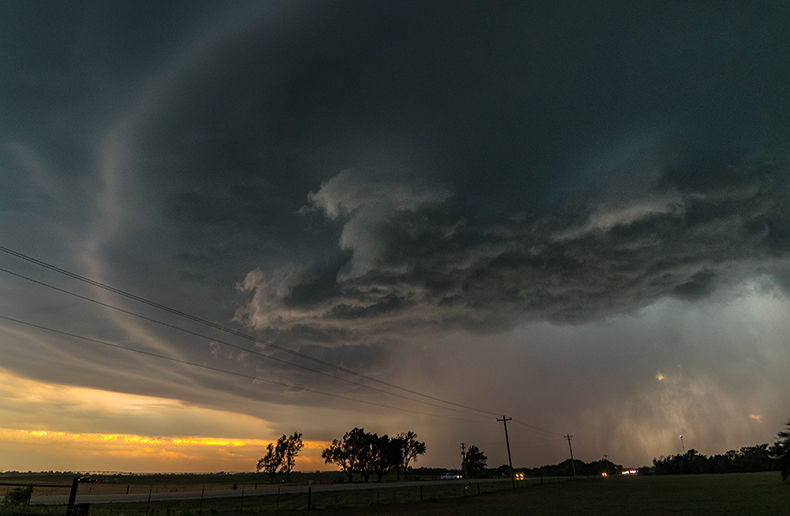Every month, the Investment Funds Institute of Canada (IFIC) publishes a chart showing the best-selling fund categories over the past year. It tells us a lot about how investors are thinking, especially when we see clear patterns developing, as we are now.For five consecutive months, from November to March, global neutral balanced funds were the most popular choice. For the last four of those months, Canadian neutral balanced funds took second spot while Canadian fixed-income balanced entries were third.
The message couldn’t be more obvious. Investors want to put a toe back into the stock markets but they aren’t prepared to plunge in all the way by buying equity funds. Instead, they’re taking a conservative approach by buying middle-of-the-road balanced funds.
That in itself is not surprising but the preference for global funds comes as a bit of a shock. For the most part, Canadians have ignored global funds in recent years as the steady rise of the loonie eroded profits while boosting returns from domestic entries.
Global funds
But it’s a new world out there. Global balanced funds outsold Canadian balanced funds by a significant margin (net sales of $6.7 billion vs. $6.2 billion) during the first quarter and have a slight edge over the past 12 months. In terms of total assets, they still trail domestic balanced funds by $35.4 billion ($126.3 billion vs. $161.7 billion) but the gap is closing due mainly to the surge of interest in global neutral balanced funds.
The Canadian Investment Funds Standards Committee (CIFSC) defines these as funds that “invest less than 70% of total assets in a combination of equity securities domiciled in Canada and Canadian dollar-denominated fixed income securities. In addition, they must invest greater than or equal to 40% but less than or equal to 60% of their total assets in equity securities”. This definition means that the category includes some funds that may not appear to belong there at first glance, including some of the best performers.
Here are two funds I particularly like in this group.
CI Signature Income & Growth Fund. This fund has been a consistently good performer, offering a desirable combination of above-average returns (it was in the first quartile of its category in six of the past eight years), good cash flow, and reasonable risk. It offers a well-balanced portfolio with 30.5% of the assets in Canadian equities and the same percentage in foreign stocks. Foreign bonds account for 16.1% of the mix while 11.7% is in Canadian bonds, 2.1% in REITs and income trusts, and the rest in cash and “other”. The overall asset mix is 63.1% stocks, 27.8% bonds, and 9.1% cash and other. About 44% of the assets are in Canadian securities with 29% in the U.S. and the rest distributed among several countries.
Returns are above average over all time frames. The one-year gain to March 31 was 12%, well above average for the category (9.2%). Longer-term results are also comfortably above those of the peer group, with a five-year average annual compound rate of return of 4.5% compared to 2.3% for the category.
The fund currently pays monthly distributions of $0.025 a unit ($0.30 a year) for a projected 12-month cash yield of 6.1% based on the NAV at the time of writing. Volatility is slightly on the high side for a fund of this type but that has not translated into the kind of roller-coaster returns we sometimes see with that profile. My rating: $$$$ (out of four).
Dynamic Value Balanced Fund. The management team of David Taylor (equities) and Barry Allen (bonds) has combined to make this a first-rate fund, albeit one that is somewhat more volatile than you might expect. Taylor uses a value style to pick his stocks and he currently favours commodities with 20.7% of the assets invested in the energy sector (up slightly from the start of the year) and 13.9% in materials stocks, a big drop from an 18.4% weighting at the beginning of January. Top holdings include Osisko Mining, Encana, Research in Motion, Magna, and Bank of Montreal.
High-yield bonds
Barry Allen is an expert in the field of high-yield bonds. Some of his largest holdings as of March 31 were Newport Finance, MGM Resorts International, and Consolidated Thompson Iron Mines Ltd., but it is important to note that the bond side of the portfolio is highly diversified with no one company comprising more than 0.7% of total assets.
Slightly over half (52.8%) of the portfolio is invested in Canadian securities with 37.5% in the U.S. Other countries represented in the portfolio are New Zealand, Bermuda, Luxemburg, and Israel.
The 12-month return to March 31 was 13.3%, about four percentage points above the category average. Over the past decade, the fund shows a very good average annual compound rate of return of 8.7%.
Monthly distributions are $0.035 a unit ($0.42 a year) so this is a respectable choice for clients who need cash flow. The projected yield for the next 12 months is 2.1%. The Fund Library ranks this as of the top three performing funds in its category over the past five years. Although risk is somewhat on the high side for a fund of this type, the rewards are worth it. Rating: $$$$.
If you have a client who is still leery about going global, here’s a Canadian neutral balanced fund to recommend.
Fidelity Canadian Balanced Fund. This is not the top-performing fund in the Canadian neutral balanced category but it produces decent returns year and year out while keeping risk to a minimum. The fund is co-managed by Mark Friebel and Mariana Egan, backed up by a strong support team with specialists in stocks, bonds, and high-yield securities.
What I like most about the fund is its consistency. The Fund Library rates it as a first-quartile performer for all time periods from three months to 10 years – that’s the kind of dependability that investors want, especially in an RRSP or RRIF.
The managers use a target asset allocation of 50% equities, 40% investment-grade bonds, and 10% cash, so the portfolio has a truly balanced look and feel. The portfolio mix as of March 31 was 45.6% Canadian stocks, 4.7% foreign stocks, 34.8% Canadian bonds, 8.9% foreign bonds, and 5.9% cash. The stocks tend to be of the blue-chip variety such as TD Bank, Suncor, Royal Bank and Potash Corporation. The major bond holdings are government issued or guaranteed.
The fund posted a gain of just under 14% in the year ending March 31, well above the average of 9.1% for the category. Over the past decade, it has returned an average of 7.4% a year compared to 4.7% for the peer group.
Put it all together and you have a first-rate choice for clients who want some stock market exposure without excessive risk. This has emerged as one of the better Canadian balanced funds and is worthy of its $$$$ rating.
Gordon Pape is the editor and publisher of Mutual Funds/ETFs Update, a monthly newsletter for Canadian fund investors. For details on a three-month trial: http://www.buildingwealth.ca/bookstore/productdetail.cfm?product_id=355
The message couldn’t be more obvious. Investors want to put a toe back into the stock markets but they aren’t prepared to plunge in all the way by buying equity funds. Instead, they’re taking a conservative approach by buying middle-of-the-road balanced funds.
That in itself is not surprising but the preference for global funds comes as a bit of a shock. For the most part, Canadians have ignored global funds in recent years as the steady rise of the loonie eroded profits while boosting returns from domestic entries.
Global funds
But it’s a new world out there. Global balanced funds outsold Canadian balanced funds by a significant margin (net sales of $6.7 billion vs. $6.2 billion) during the first quarter and have a slight edge over the past 12 months. In terms of total assets, they still trail domestic balanced funds by $35.4 billion ($126.3 billion vs. $161.7 billion) but the gap is closing due mainly to the surge of interest in global neutral balanced funds.
The Canadian Investment Funds Standards Committee (CIFSC) defines these as funds that “invest less than 70% of total assets in a combination of equity securities domiciled in Canada and Canadian dollar-denominated fixed income securities. In addition, they must invest greater than or equal to 40% but less than or equal to 60% of their total assets in equity securities”. This definition means that the category includes some funds that may not appear to belong there at first glance, including some of the best performers.
Here are two funds I particularly like in this group.
CI Signature Income & Growth Fund. This fund has been a consistently good performer, offering a desirable combination of above-average returns (it was in the first quartile of its category in six of the past eight years), good cash flow, and reasonable risk. It offers a well-balanced portfolio with 30.5% of the assets in Canadian equities and the same percentage in foreign stocks. Foreign bonds account for 16.1% of the mix while 11.7% is in Canadian bonds, 2.1% in REITs and income trusts, and the rest in cash and “other”. The overall asset mix is 63.1% stocks, 27.8% bonds, and 9.1% cash and other. About 44% of the assets are in Canadian securities with 29% in the U.S. and the rest distributed among several countries.
Returns are above average over all time frames. The one-year gain to March 31 was 12%, well above average for the category (9.2%). Longer-term results are also comfortably above those of the peer group, with a five-year average annual compound rate of return of 4.5% compared to 2.3% for the category.
The fund currently pays monthly distributions of $0.025 a unit ($0.30 a year) for a projected 12-month cash yield of 6.1% based on the NAV at the time of writing. Volatility is slightly on the high side for a fund of this type but that has not translated into the kind of roller-coaster returns we sometimes see with that profile. My rating: $$$$ (out of four).
Dynamic Value Balanced Fund. The management team of David Taylor (equities) and Barry Allen (bonds) has combined to make this a first-rate fund, albeit one that is somewhat more volatile than you might expect. Taylor uses a value style to pick his stocks and he currently favours commodities with 20.7% of the assets invested in the energy sector (up slightly from the start of the year) and 13.9% in materials stocks, a big drop from an 18.4% weighting at the beginning of January. Top holdings include Osisko Mining, Encana, Research in Motion, Magna, and Bank of Montreal.
High-yield bonds
Barry Allen is an expert in the field of high-yield bonds. Some of his largest holdings as of March 31 were Newport Finance, MGM Resorts International, and Consolidated Thompson Iron Mines Ltd., but it is important to note that the bond side of the portfolio is highly diversified with no one company comprising more than 0.7% of total assets.
Slightly over half (52.8%) of the portfolio is invested in Canadian securities with 37.5% in the U.S. Other countries represented in the portfolio are New Zealand, Bermuda, Luxemburg, and Israel.
The 12-month return to March 31 was 13.3%, about four percentage points above the category average. Over the past decade, the fund shows a very






